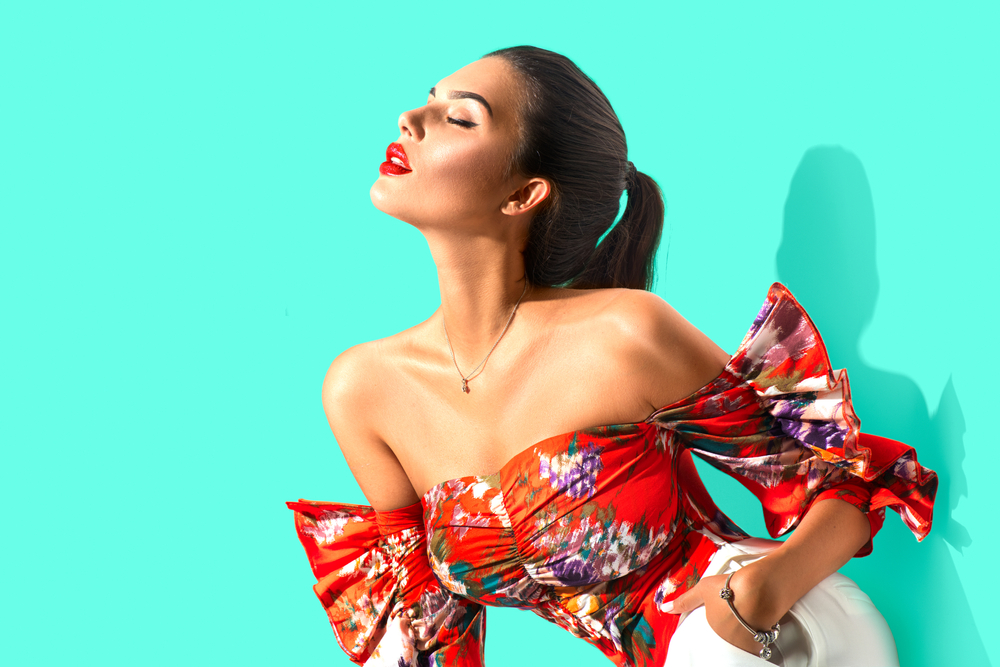
In the world of fashion and advertising, the power of a captivating photograph can never be underestimated. Behind every stunning image is a talented team of professionals working together to bring a vision to life, and at the center of it all is the model. The art of modeling is a captivating and complex world that requires not only physical beauty but also an array of skills and an understanding of the industry. In this article, we will delve into the secrets behind the glamorous world of modelling and uncover the artistry that goes into creating those mesmerizing photoshoots.
Understanding the Role of a ModelModels are the canvas upon which fashion designers and brands bring their creations to life. They are the faces that captivate and inspire consumers to desire a lifestyle or a certain look. Contrary to popular belief, modeling is not just about standing in front of a camera and looking pretty. It requires versatility, adaptability, and the ability to embody different characters and emotions. A successful model must possess the ability to communicate nonverbally and tell a story through their body language and expressions.
The Elements of a Successful Photoshoot
Behind every eye-catching photoshoot, there is a team of professionals working together to create magic. From the photographer and the stylist to the hair and makeup artists, every detail counts towards creating the perfect image. The collaboration between these creative individuals is what transforms a simple photoshoot into a work of art.
The photographer is the visionary behind the lens, capturing the essence of the model and the clothing while also ensuring technical perfection in terms of lighting and composition. The stylist plays a crucial role in selecting the outfits and accessories, and their eye for trends and aesthetics helps create a cohesive and visually appealing story. The hair and makeup artists enhance the model's natural features and bring the desired look to life, whether it be bold and dramatic or soft and natural.
The Modeling Industry: Challenges and OpportunitiesThe modeling industry is known for its glamour, but it's not without its challenges. Models face intense competition, constant scrutiny, and the pressure to maintain a certain appearance. However, with challenges come opportunities for growth and success. The industry is evolving, embracing diversity, and breaking traditional beauty standards. There is room for models of all sizes, ethnicities, and backgrounds, creating a more inclusive and realistic representation of society.
To succeed in the industry, models must be resilient, determined, and proactive. Building a strong portfolio, networking with industry professionals, and continuously honing their skills are essential steps towards a successful career in modeling.
Frequently Asked Questions:
1. How tall do you have to be to become a model?
The height requirements for models vary depending on the specific type of modeling. While high fashion modeling often requires taller models (usually around 5'9" to 6'0" for women and 6'0" to 6'3" for men), there are various other types of modeling, such as commercial or plus-size, where height is not as important.
2. Can anyone become a model?
While the modeling industry has become more inclusive, not everyone is cut out to become a professional model. A certain look, physical attributes, and skills are needed. However, there are opportunities for aspiring models of diverse backgrounds and sizes to find their niche in the industry.
3. Do models have to be skinny?
The industry has made great strides in embracing body positivity and diversity. While there are still demands for slimmer models in certain segments, there are also opportunities for plus-size and curve models who represent a more realistic range of body types.
4. How do models pose like professionals?
Posing is a skill that models learn and develop over time. It is essential to practice and become comfortable with different poses and angles. Studying fashion magazines, observing professional models, and taking guidance from photographers during photoshoots can also help improve posing skills.
5. Is it necessary to have professional photos before starting a modeling career?
While professional photos can certainly enhance a portfolio, they are not always necessary when starting a modeling career. Agencies and clients are often more interested in a model's natural beauty and versatility. However, investing in professional photoshoots can help aspiring models stand out and showcase their potential.
In conclusion, the world of modeling is a complex and captivating one. It requires much more than just physical beauty, as models must possess a range of skills and understand the industry. Behind every mesmerizing photoshoot lies a team of talented professionals working together to create magic. Overcoming challenges and embracing opportunities is key to success in this ever-evolving industry. Whether you dream of gracing the covers of fashion magazines or representing brands, the art of modeling is a journey filled with endless possibilities.
Other useful resources
- https://en.wikipedia.org/wiki/Modeling_agency
- https://en.wikipedia.org/wiki/Category:Modeling_agencies
- https://en.wikipedia.org/wiki/Category:Models_by_modeling_agency
- https://www.planetmodelphoto.com